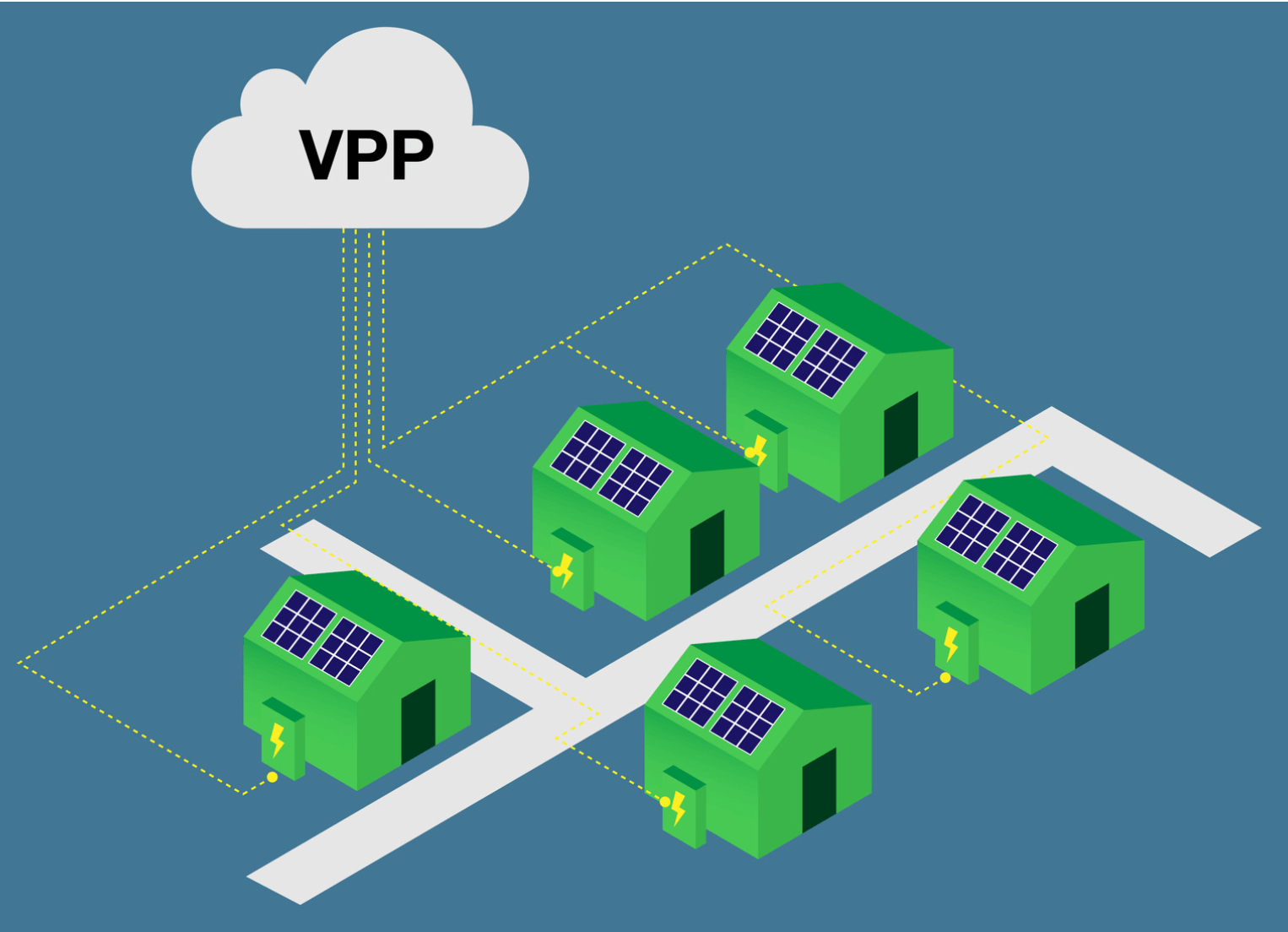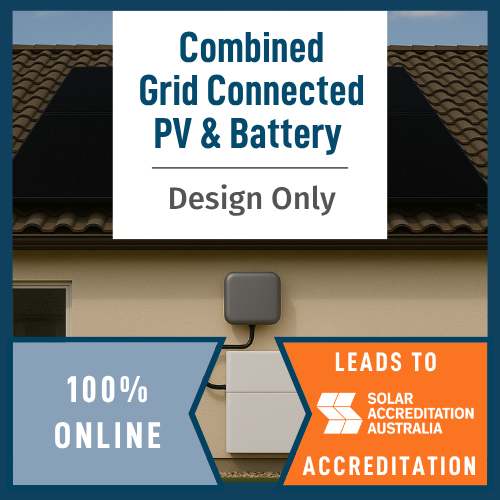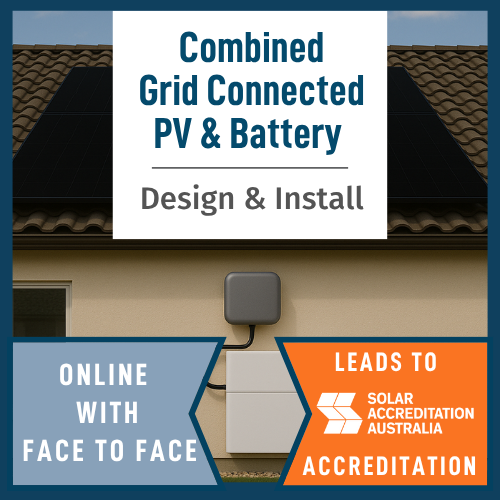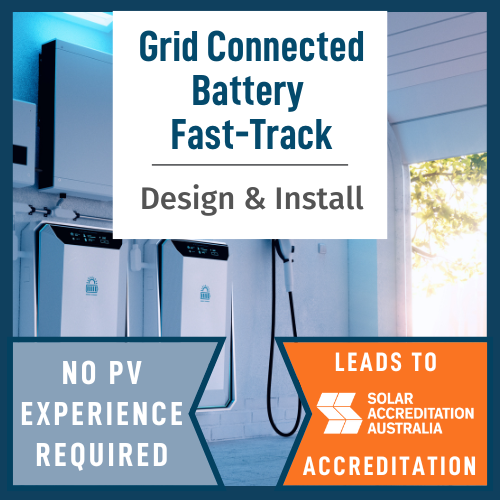Virtual power plants (VPP) have the potential to make the grid infrastructure more resilient in Australia. Currently, VPPs can reduce the pressure on the grid during times of high demand. It does this by linking small-scale independent decentralised generators like PV systems and batteries into a network, with communication and controls to allow the units to act together like a conventional power station controlled by an operator. In the near future, VPPs might also have the ability to trade electricity when the wholesale electricity prices are high.
Technically, while any aggregate of distributed energy generation and storage can be incorporated into a VPP, practically, battery energy storage systems are the best for VPP operations. This is because the VPP requires stored or reliable energy which can be discharged at a short notice.
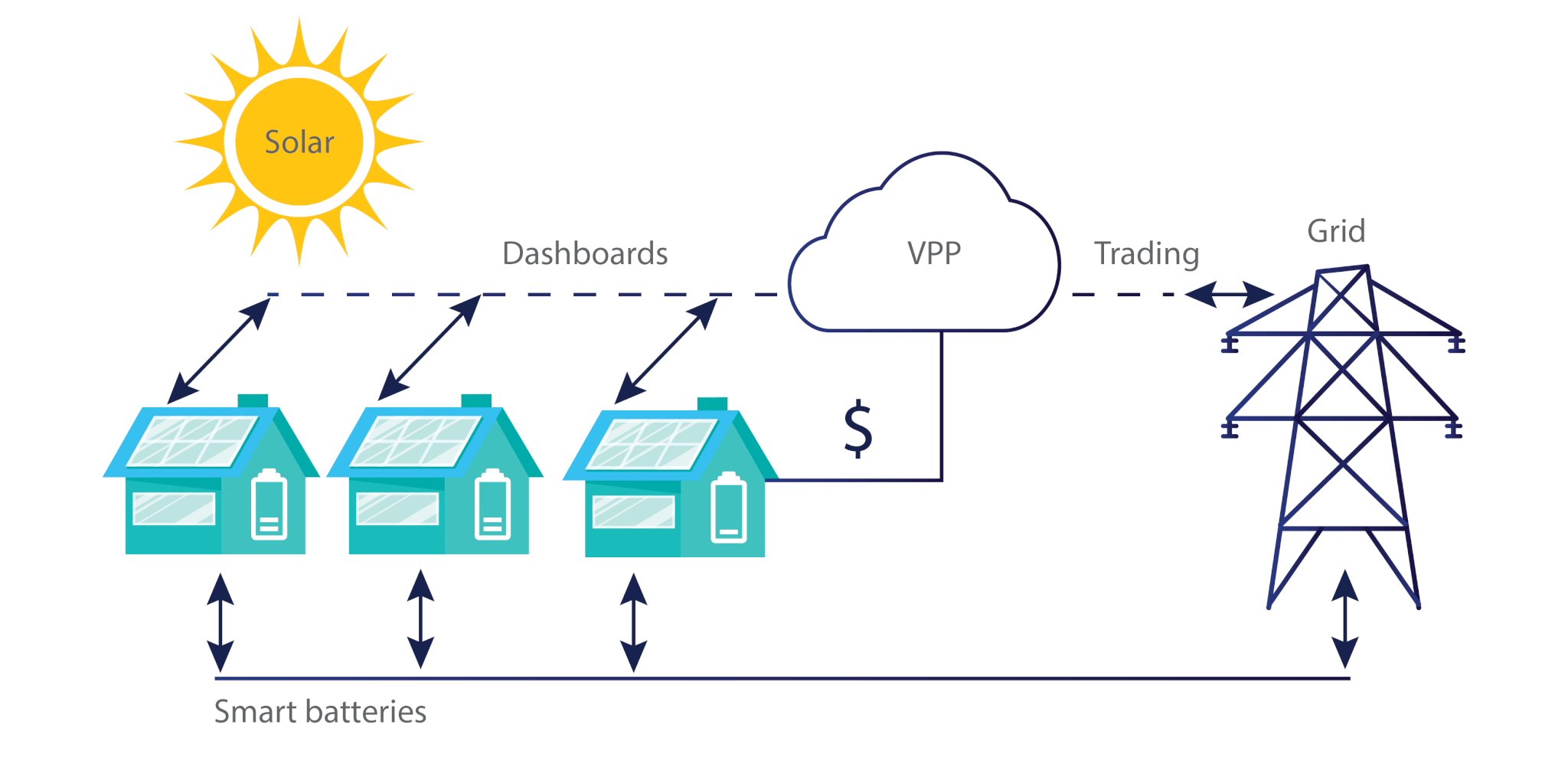 Figure 1: Distributed batteries can be controlled by a VPP over the cloud to act like a power plant
Figure 1: Distributed batteries can be controlled by a VPP over the cloud to act like a power plant
The VPP operators earn revenue by participating in the National Energy Market and discharging the VPP to the grid during times of high electricity demand, or by providing network support to Distributed Network Service Providers by charging or discharging the VPP in a certain way to stabilise the grid. The VPP operator can control the VPP participant’s battery system to charge, hold charge, or discharge the batteries in response to the grid’s needs. The system owners in turn are paid either for the availability of their battery capacity, or in return for participation in the VPP. Joining a VPP in effect creates another income stream for the battery system owner.
Households with a grid-connected PV system and batteries may already be able to participate in existing VPP arrangements provided by demand response providers such as energy retailers or demand response aggregators such as Enel X or Reposit, depending on their location and system compatibility.
Virtual Power Plants’ Grid Integration in Australia
VPPs have huge potential in Australia. The AEMO estimates that the current combined size of all VPPs in Australia is relatively small – around 5-10 MW, but expects this number to grow. Several large-scale VPP projects, and Government subsidies to support VPP capable systems, have been announced recently, with targets that equate to up to 700 MW of VPPs operating in the NEM by 2022. AEMO also predicts that Australia may see up to 150,000 residential battery systems installed by 2025.
Notable VPPs in Australia include:
- South Australian public housing tenants’ VPP delivering up to 50,000 installations in both public and private properties with a corresponding capacity of up to 250 MW.
- Next Generation Energy Storage Program, installing battery storage in more than 5,000 Canberra homes and creating VPP capability of 36 megawatts (MW).
- AGL’s VPP in South Australia, which aims to coordinate up to 1,000 residential storage systems (now available throughout NSW, QLD, SA and VIC).
- Simply Energy’s 8 MW VPP to be developed in Adelaide, comprising 6 MW of residential battery storage and 2 MW of demand response capacity from commercial businesses.
- Other VPPs can be found here: https://www.solarquotes.com.au/battery-storage/vpp-comparison/
VPP Implementation Challenges
As Australia starts to see more VPPs, it also faces the challenges of integrating these plants with existing infrastructure and regulation. At the same time, VPPs also open up potential for innovative solutions for grid support. There are two main aspects to the challenges present: network integration and delivering value for individual system owners.
Currently, DNSPs and AEMO have very little visibility of VPP activities; this can limit VPPs from achieving their full network support potential and can distort market signals. Integration of VPPs will require adjustments to existing policies relating to the grid connection process of VPP equipment such as grid-connected PV systems and batteries. Further studies and trials are needed to determine how their functions can be deployed across the whole network, as well as what the new frameworks should look like.
As VPPs “borrow” capacity from residential battery systems, VPPs also need to achieve the desired outcomes for system owners. Not looking after the battery system owner’s interest could result in the loss of the battery fleet.
The value of VPP participation can be unclear for battery system owners. The battery system owner may need explanation on:
- the financial benefit of participating in a VPP,
- reimbursement structure,
- the frequency of access to their batteries,
- their obligation to participate (e.g. whether they can override VPP instructions), or
- any other questions on how their system fits within the VPP.
Therefore, the VPP operator must address these questions in a way that is easy to understand in order to maintain a positive relationship with the system owner and retain their generator base.
Battery system owners may also be worried about their personal data being used by third parties without their knowledge or consent. Thus, there needs to be precautions and rules set in place to ensure data confidentiality.
This concern can be shared by retailers and the network distributors, with additional concerns surrounding cyber security, as well as the rights to the data. For example, there is a risk that unauthorised actors could gain control over energy resources regardless of whether they are a participant in the program. AEMO recommends that VPPs engage with a new Distributed Energy Resources/Emerging Technology Working Group (DERWG), which is a sub-group of the Australia Energy Sector Cyber Security Framework (AESCSF).
Battery systems have a highly lucrative value proposition to the FCAS market; however, it is still unclear how reliably VPPs can provide FCAS and other ancillary services. AEMO is currently running Virtual Power Plant (VPP) Demonstrations designed to inform regulatory changes and operational processes on how VPPs can be effectively integrated into the National Electricity Market (NEM), maximising value to consumers while also supporting power system security. Analysing the FCAS capabilities of VPPs is one of the many objectives that AEMO is trying to achieve from the demonstrations. Links to AEMO’s demonstration trials is at the bottom of this article.
Additionally, the following is suggested by AEMO to maximise access to available network capacity and enable VPPs to reach their full potential:
- Open access to dynamic, locational network constraint information
- Common communications standards
- Visibility and forecasts
- Well-defined fallback / off-line behaviour
- Integrated control of solar and battery output can be beneficial
Conclusion
Virtual Power Plants in Australia are still in the early stages of development, both in terms of the size of VPP portfolios and in the sophistication of software and communication systems used to operate them. There are a multitude of ways virtual power plants can take shape. Australia has a relatively high market penetration of solar and battery, which presents itself as the perfect proving ground for VPPs.
At this stage of VPP uptake, it is important that VPP operators present a strong business case and ongoing support for its generator base – the system owners. At the same time, VPP operators will need to overcome teething issues such as data security, operational mechanism, and bidding into the ancillary services market with great reliability.
AEMO’s VPP Demonstration Trial will provide valuable insights and much needed unification of specifications for not only VPP operators, but possibly for battery and inverter manufacturers too. GSES will be watching the developments of virtual power plants in Australia and analysing implications for installers and customers.
We recommend our Sprint Course on Virtual Power Plants below for more learning:
References:
- https://www.aemo.com.au/initiatives/major-programs/nem-distributed-energy-resources-der-program/pilots-and-trials/virtual-power-plant-vpp-demonstrations
- https://www.aemo.com.au/-/media/Files/Electricity/NEM/DER/2019/VPP-Demonstrations/NEM-VPP-Demonstrations_Final-Design.pdf
- https://www.aemo.com.au/-/media/Files/Electricity/NEM/DER/2019/VPP-Demonstrations/VPP-Demonstrations-FCAS-Specification.pdf

